100th Anniversary Great Nave Tour at the Cathedral of St. John the Divine
Celebrate the 1925 construction of the stunning nave inside the world's largest Gothic cathedral!

It’s doubtful that any Untapped readers need to be reminded about the importance of historic preservation and the unique layers of history hidden throughout New York, but if anyone needs a refresher she should spend some time with Joe Svehlak, a New York tour guide extrodinaire, and leader of the Municipal Art Society’s “Downtown Connections” tour on Sunday. Joe, a spry 72, has spent over 15 years at MAS, and before that he grew up in downtown New York and was a bike messenger there for many years. He answered every question we put to him, and did so with palpable enthusiasm for the history of New York City. The group met at St. Paul’s Chapel, across the street from the construction site of the Fulton Center.
Survival and change was the theme, as we examined a building that survived the fire of 1776 and the attacks on September 11th, and then looked across the street to the MTA capital project meant to unite multiple subway lines and provide a center for transportation around downtown New York.
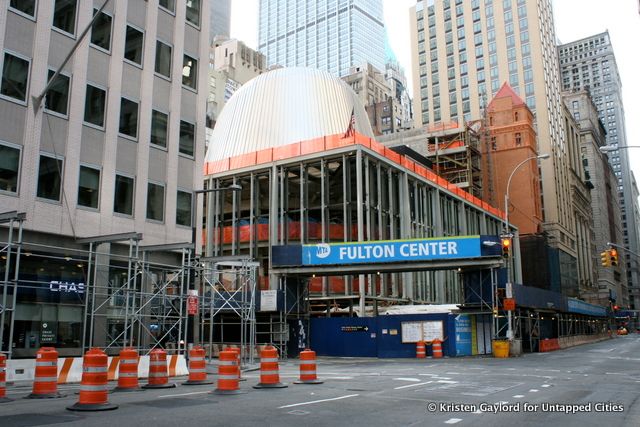
As we walked around the area, Joe made impassioned pleas for awareness of the architectural history in our city, and preservation efforts to save them from development. He pointed out the former residence of the Clark building on the corner of Broadway and Park Place, and spoke to us about the Credit mural formerly at 99 Church. We all looked up over the construction pit to the Woolworth Building, enjoying a view that won’t last much longer once the development is complete.
We then headed underground. Joe wanted to show us the downtown underground route that will soon be possible, when construction on the World Financial Center passageways and Fulton Center is finished. New Yorkers will be able to travel by foot from Chambers Street and Church Street to the intersection of John Street and William Street. Remember that next time it’s cold outside! It will be possible to meander from the World Financial Center to Fulton Street and William Street near South Street Seaport. Developers and the MTA are in the midst of creating a sort of subterranean mimic of the city above.
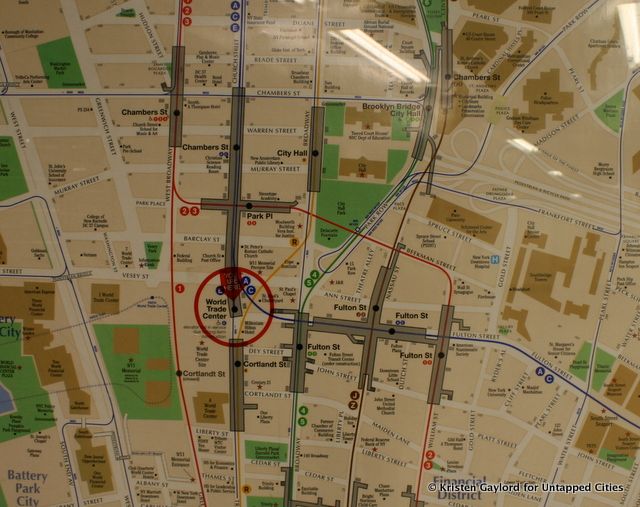
Heading underground at the Chambers Street and Park Place A/C and 2/3 station, we stopped to look at Oculus (1998), an Arts for Transit installation by Andre Ginzel and Kristin Jones. The diverse eyes of three-hundred New Yorkers accompany straphangers throughout the passageway between the subway lines, leading to a 20 x 40 foot mosaic that overlays the map of New York and the map of the world.
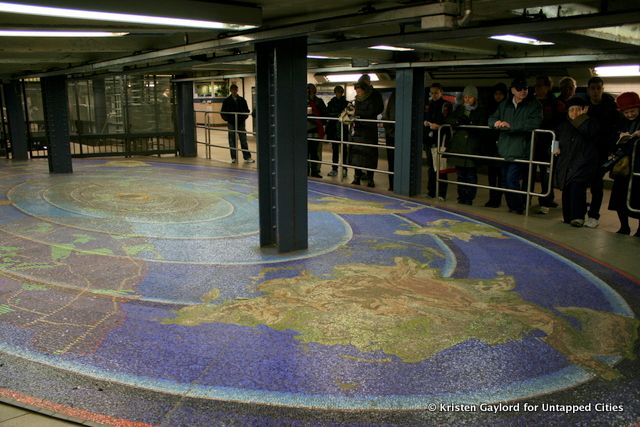
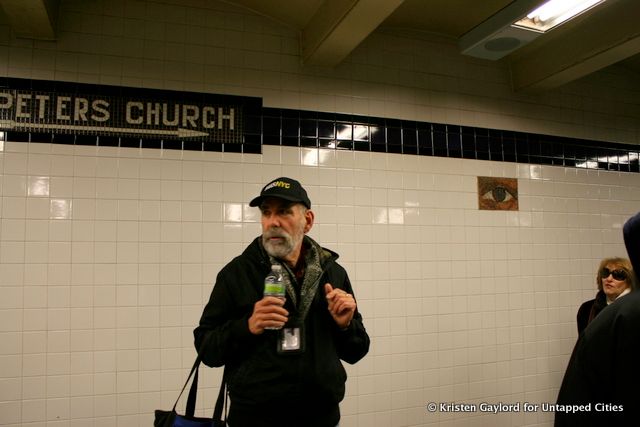
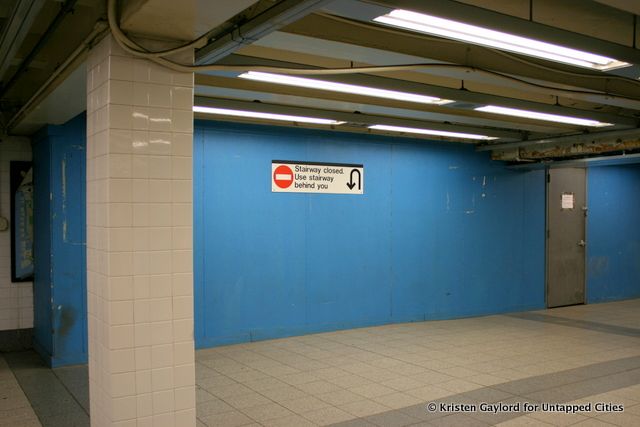
We jumped above ground for a few streets, then headed back under to view more art at the Cortlandt Street R station. Here, Margie Hughto’s Trade, Treasure and Travel (1997) was removed during construction of the Dey Street Concourse to Fulton Center and reinstalled in 2011. The ceramic panels explore all that passes through New York, “the different peoples, products, objects, and money” that bring vibrancy and diversity. One piece adorns the uptown side, one the downtown side, and possibly the most beautiful section greets commuters below in the passageway between the two.
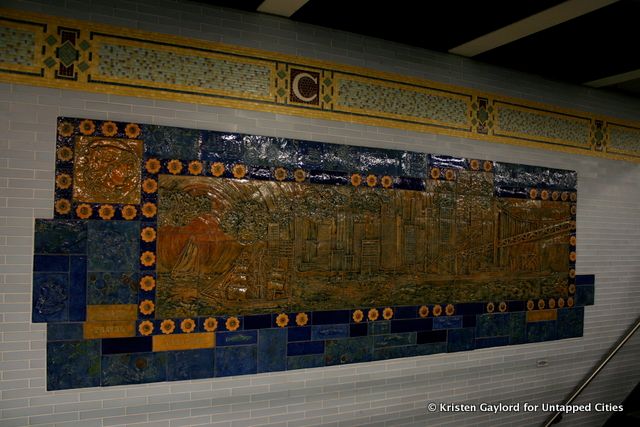
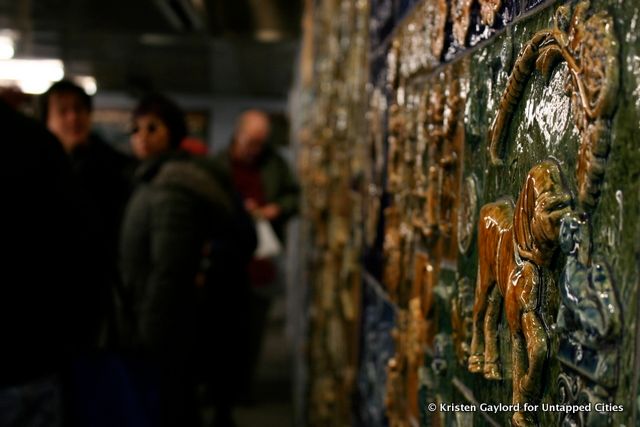
Back aboveground, we took a moment to mourn the demolished Singer Building at the current location of One Liberty Plaza. But nearby is cause for celebration: the Fulton Center construction has brought renewed attention to the Corbin Building, as it will serve as an entrance to the transit hub on the ground floor, and the exterior and interior are being conserved.
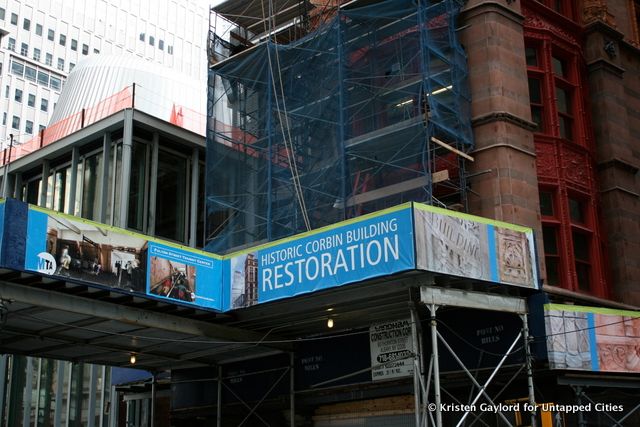

We headed into the entrance to the Fulton Street 4/5 for the last leg of our tour: a look at what construction’s already been completed, and what remains to be done.
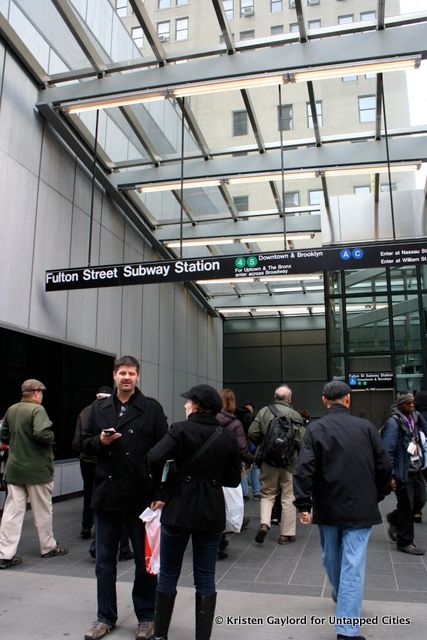
Other early 20th century terra cotta examples, such as these at Fulton Street, have repeatedly been preserved by the MTA during construction. Sometimes earlier layers of the station’s history are highlighted, as they are at 14th Street-Union Square, other times they are matched with modern continuation of the old mosaic patterns, as they are at Fulton Street. Either way, the MTA has shown an impressive appreciation of maintaining the subway system’s history, even as large projects like Fulton Center are undertaken. Joe reminded us of the “unnaturalness” of underground travel in the early years of the subway, and how scared some New Yorkers would have been to venture underground for extended travel. The Beaux-Arts ornamentation beautifying the stations was a way to make them hospitable, comforting and impressing the city’s commuters.
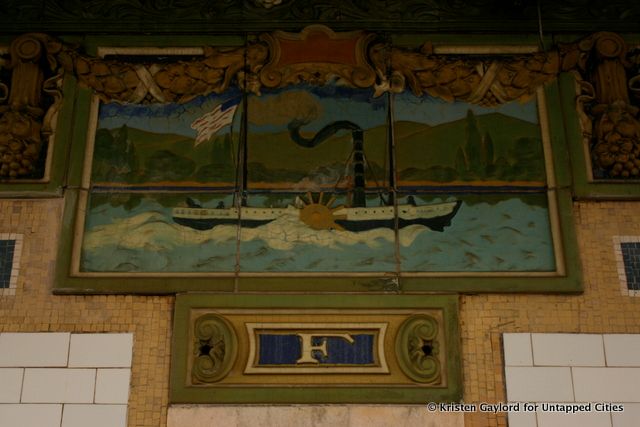
Joe showed us the attempts to streamline the connections between the 4/5, 2/3, J/Z, and A/C trains in this complicated and sometimes convoluted area. A straight passageway has been built where possible, but walking from the 4/5 to the 2/3 is interrupted by the stacked lines of the J/Z train, one built above the other.
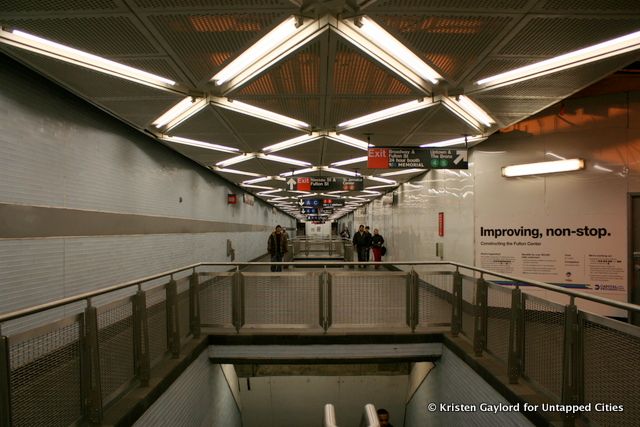
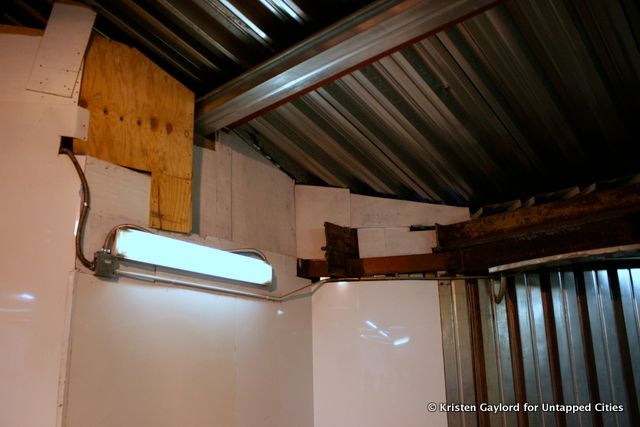
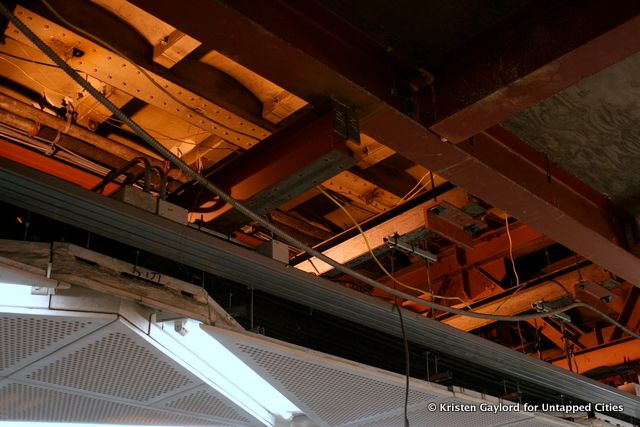
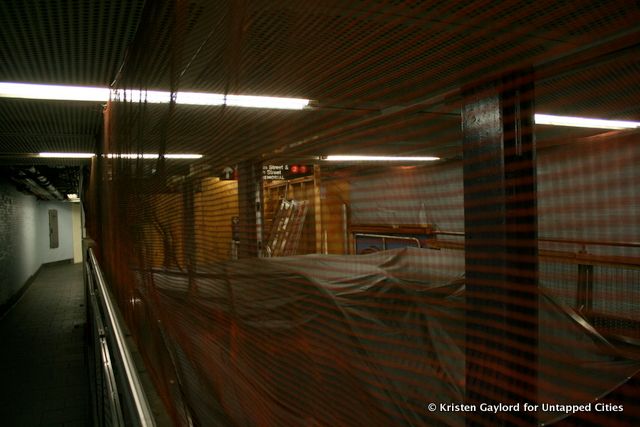
Up the stairs then down again and straight forward, we eventually came to Frederick Dana Marsh’s Marine Grill Murals (1913). The murals, which celebrate New York as a port city, were originally created for the McAlpin Hotel on 34th Street, and were entrusted to the NYC Landmarks Preservation Commission when the building was being renovated in 1989. In 2000 some of the murals and the hotel’s iron grille were installed by Arts for Transit in the Fulton Street/Broadway-Nassau passageway, until they were removed in 2009 for construction and reinstalled at the Williams Street entrance in 2011.
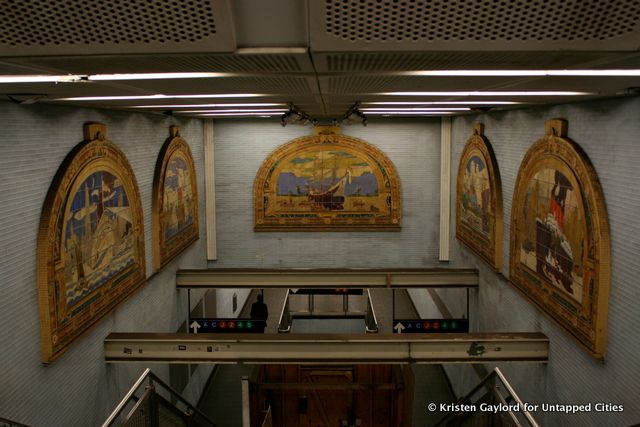
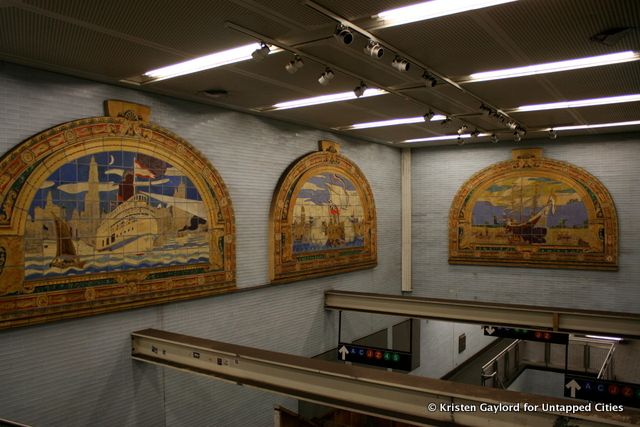
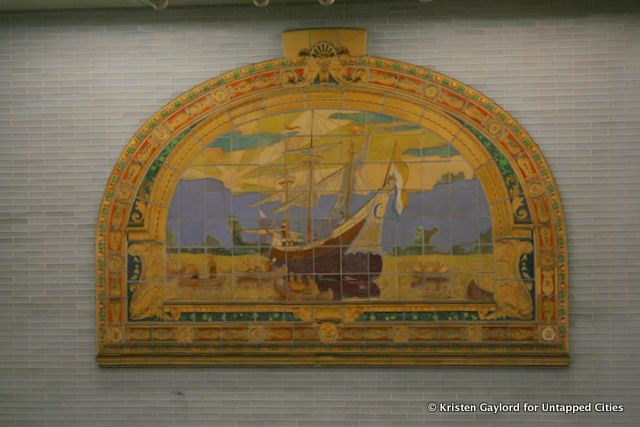
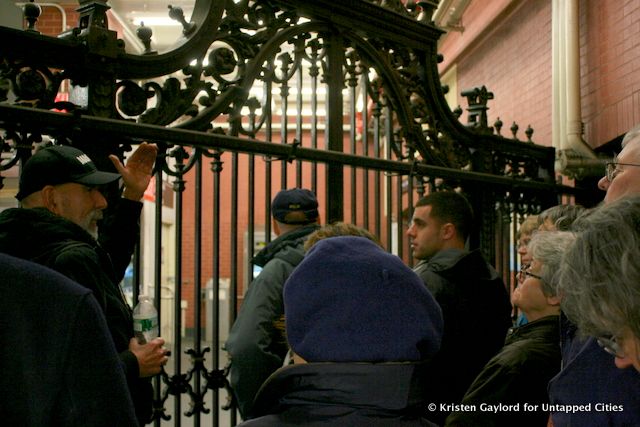
Maybe modern city planners and developers could take a lesson from the MTA and Arts for Transit in this regard. It is possible to move forward while preserving and maintaining the complicated layers of New York’s past. It is possible to accommodate modern life amongst historical structures. And it is possible that New Yorkers are inexorably proud of their city, and will welcome the chance to celebrate its accomplishments during their daily life, whether by admiring the Woolworth Building or examining Marsh’s murals.
Contact the author at @kaygegay
Subscribe to our newsletter